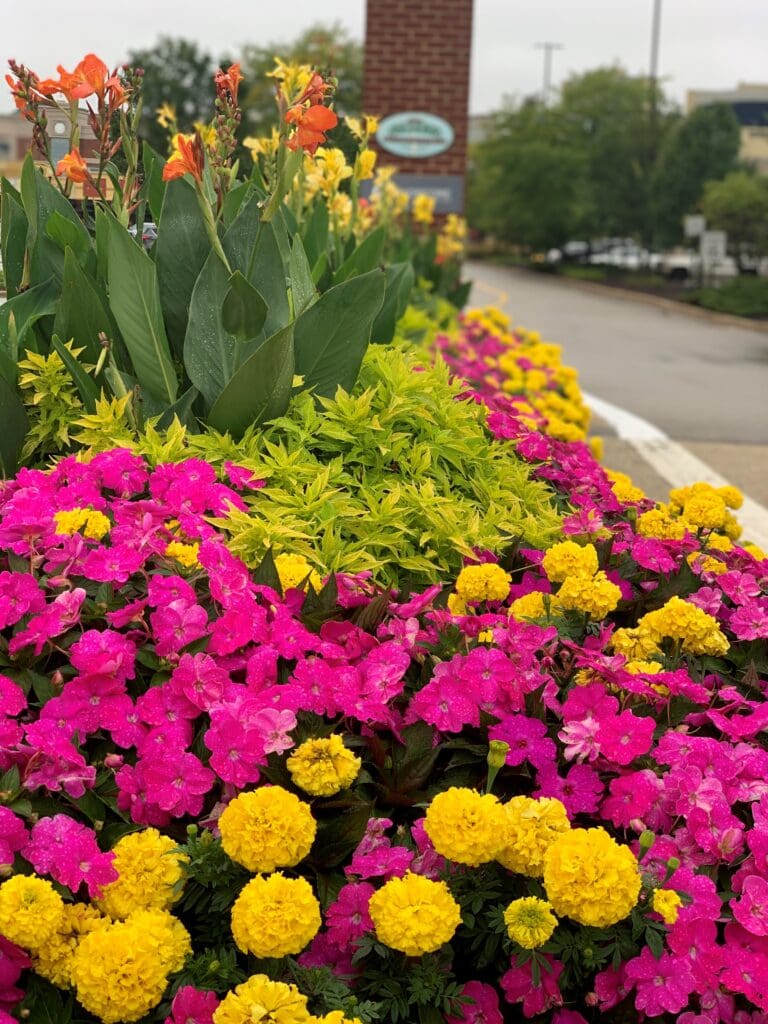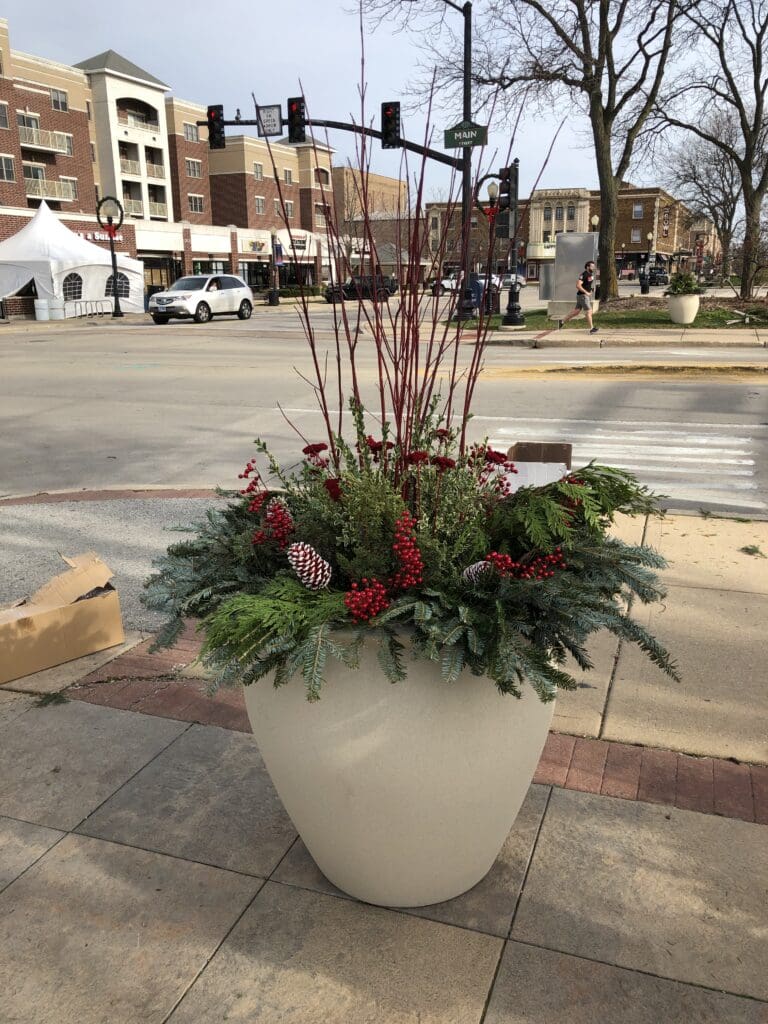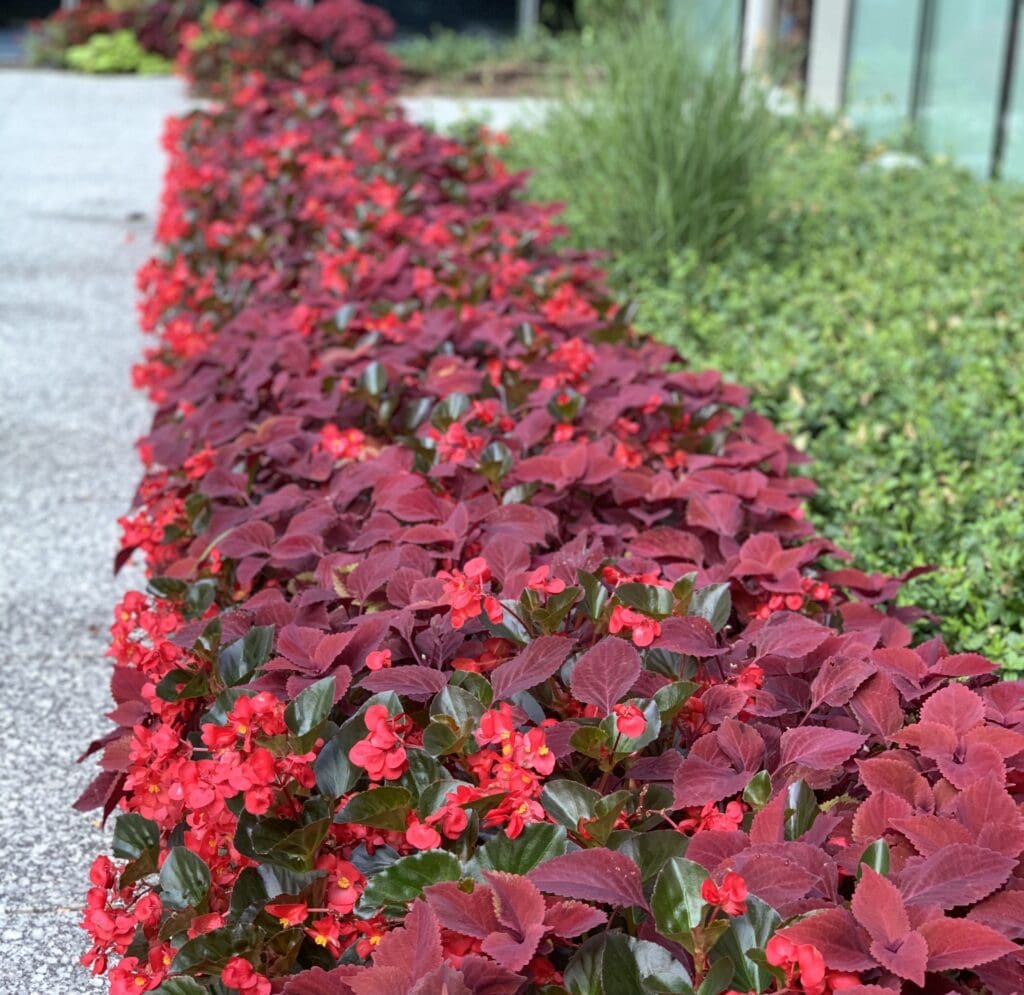
Seasonal color can provide your clients’ properties with that extra bit of pizazz, but coming up with creative designs that offer up that wow factor season after season can be tricky.
Melissa Dorsey, vice president of sales for Woodlawns Landscape Company, Inc., based in Mundelein, Illinois, says the key is to hire someone dedicated to growing this arm of your business.
“You need to find someone who loves flowers,” says Sandra Koslowski, account manager for Beary Landscaping, based in Lockport, Illinois. “You need to find someone who gets excited about color and combos and choosing flowers and you need to get someone who has a good eye.”
Selecting Plant Material
The first step to creating beautiful seasonal displays is identifying your plant workhorses, which you can count on to handle whatever Mother Nature throws at them. Brittney Oden, enhancement operations manager for Southern Botanical, based in Dallas, Texas, says she likes using coleus, sweet alyssum, pentas and petunias. They also install cabbage and kale in their fall displays.

“We use a lot of purple fountain grass, especially in our spring and summer beds because it lasts so long and it gets really big and beautiful,” Oden says.
Dorsey says caladium can be used in many different spaces as long as it’s warm enough at night. She also likes Dorotheanuthus because it’s tough and a little bit different from the popular sweet potato vine. Sedum ‘Lemon Ball’ is another versatile plant she can count on.
Some of Koslowski’s go-to plants include the ‘Whopper’ begonias, SunPatiens, and ‘Vista’ petunias. She says for their containers, they like to follow the thriller, filler, spiller formula. Beary Landscaping will use cannas, cordyline or tropical grasses for the thriller, begonias, petunias or SunPatiens for the filler and sweet potato vine or ‘Goldilocks’ Lysimachia for the spiller.
Traits to look for include longevity, bloom time, versatility and vibrant color.

“You want something that’s going to show at the front of a building where they’re pulling up,” Koslowski says. “You want some showy hot colors, so vibrant pinks and purples and fushias and orange and yellow. Those are all going to read really well versus a darker maroon. It’s going to kind of blend into the mulch and get lost in the shade.”
Oden adds that shaded properties make it more challenging to find plants that will be successful in those beds. Dorsey says that clients often want the same look everywhere, but you need to pick a plant that can handle sun or shade or have a partner plant that looks very similar.
Oden also looks for root establishment in her seasonal color material.
“I want to make sure that it’s really established roots, so if we all of a sudden get a temperature swing, that plant is going to be able to establish faster,” Oden says. “We also look at hardy plants that are hardy in temperature swings.”
Koslowski says they try not to pick plants that they have to baby a ton. Most of their clients just want showy flowers. She says they try to choose plants that do that without needing deadheading or special care.
Keeping It Creative
Typically, most commercial clients will leave the creative process to your team. Koslowski says maybe 10% of their clients request something specific while the rest just say make it pretty. She keeps records of what they’ve done in years past and can help clients pick from elements they liked in past designs.

For the clients who want to be more involved, Dorsey says try to provide vision boards or color stories so the customer can pick the colors they like and then Woodlawns will pick plants that perform well in that color scheme.
Oden says it’s more common for clients to know what colors they don’t want to be used in the design. She says this is helpful because they can guide the client on what plant material will be successful.
“They’re not too worried about the plant choice as long as it looks good and they don’t have their clients complaining to them,” Oden says.
In the case of a client who requires a specific brand color in their plant beds and containers, Koslowski says there are so many plants to choose from that even when she’s limited to a brand color she hasn’t had any problem with that.
“If your company colors are blue, I might choose purples and whites to give that blue effect,” Koslowski says. “There are so many flowers and repeating and mixing different combos, you’re going to be able to satisfy those requests pretty easily.”
Oden says they try to do different color mixes. For instance, with the color red, you could do a violet or a purple, so it’s not all one color. For the clients who insist it must be red, Southern Botanical will use plants of varying heights to keep it from looking like a carpet.

“Some of our clients like that carpet feel,” Oden says. “We’re like, ‘If that’s what you like and that’s what you want, we’ll keep doing that.’”
Dorsey says that intermixing plants that are a family of colors can create a really interesting texture.
“I think a very underutilized technique is interplanting tone on tone color, using multiple plans to achieve one color,” Dorsey says.
She encourages trying to mix up the design or even the cultivar so it’s not the same thing every year. Ask the client if you can change things up in one bed so they can see how it looks.



